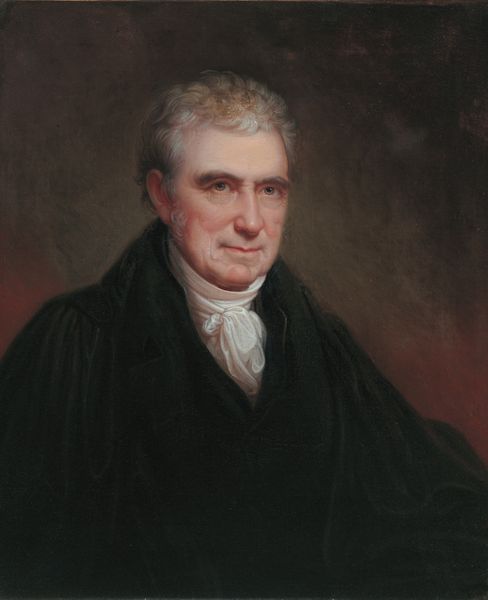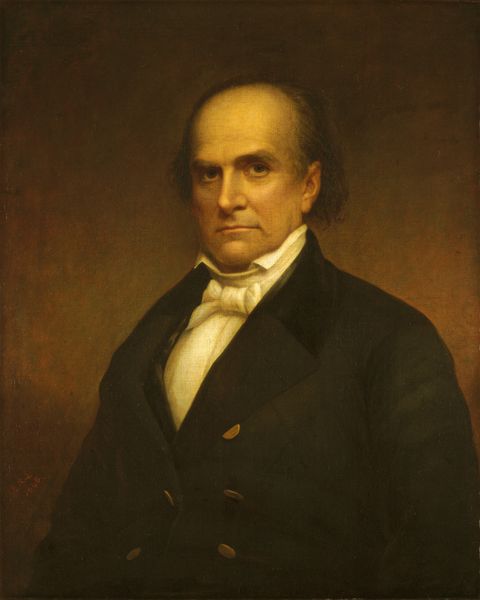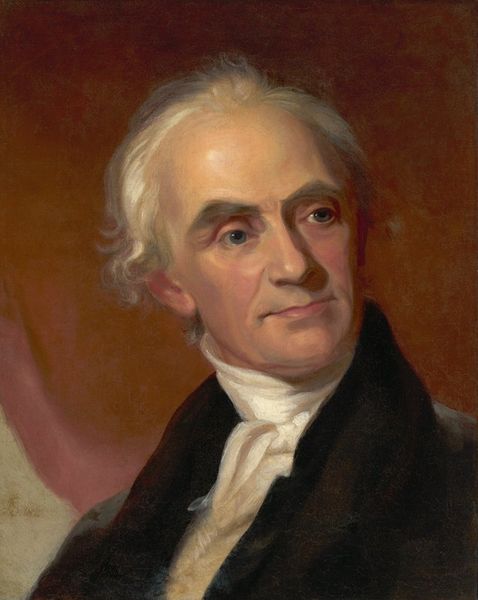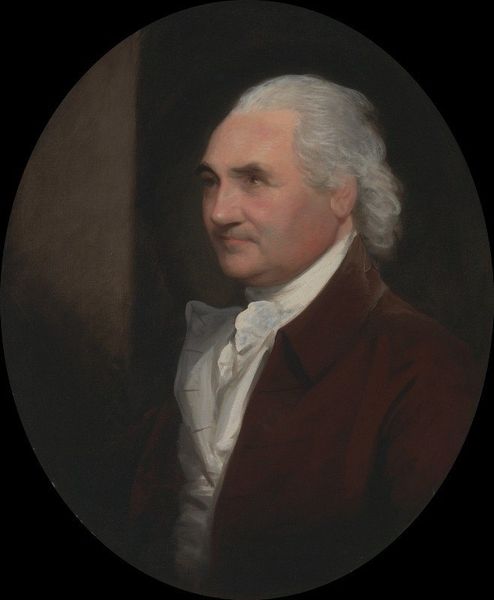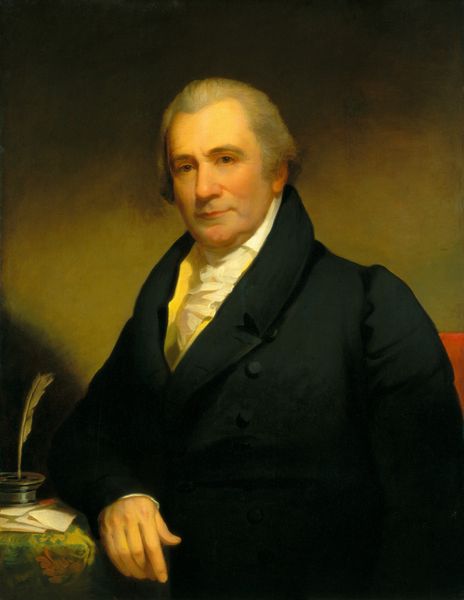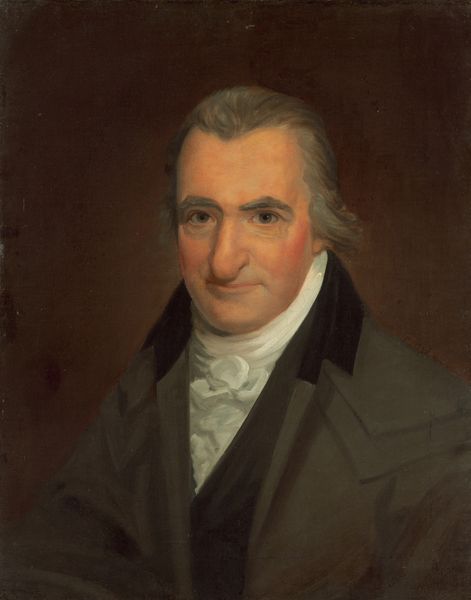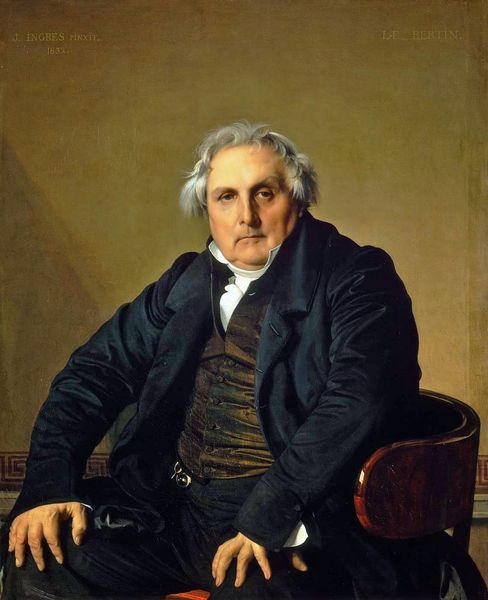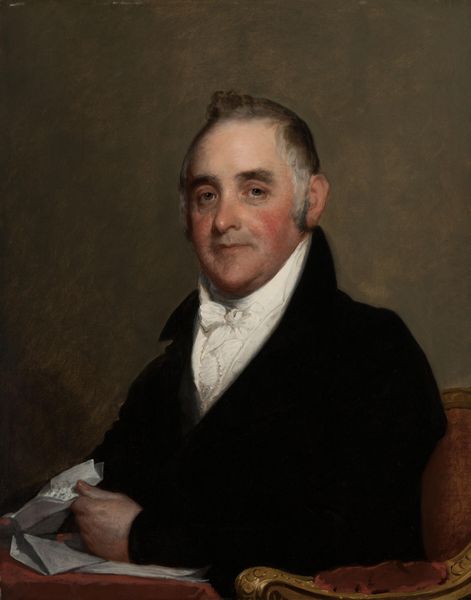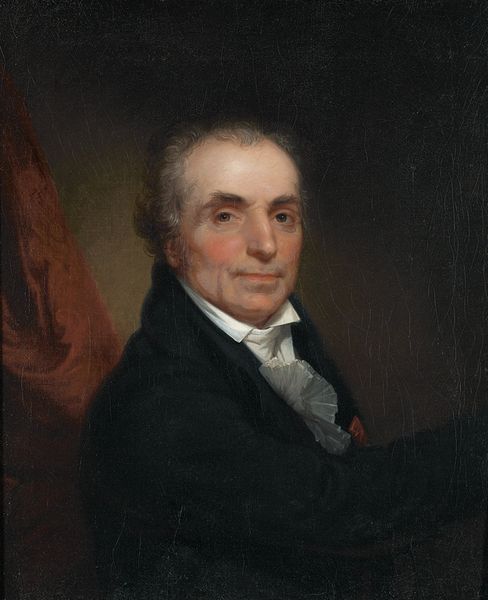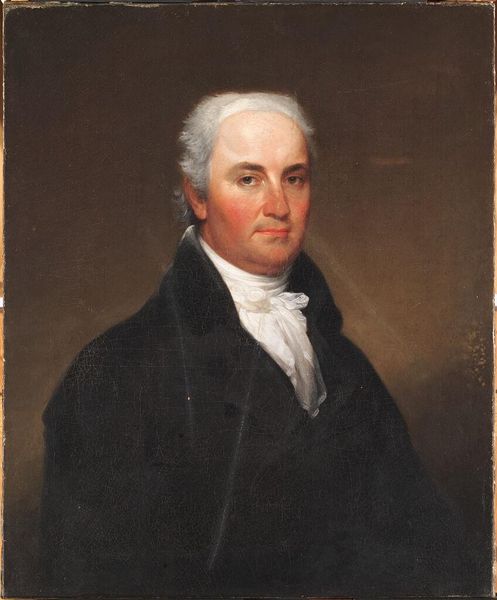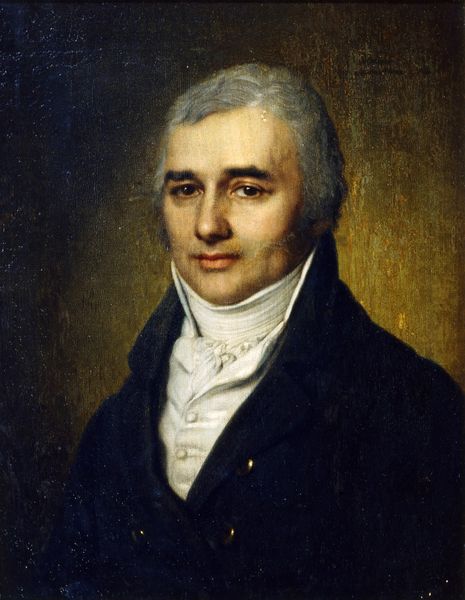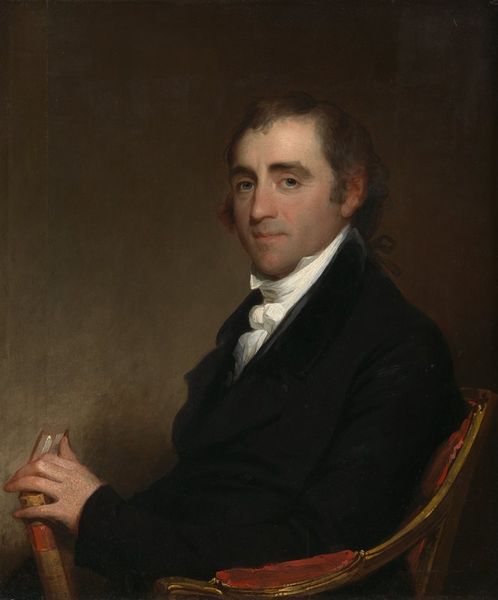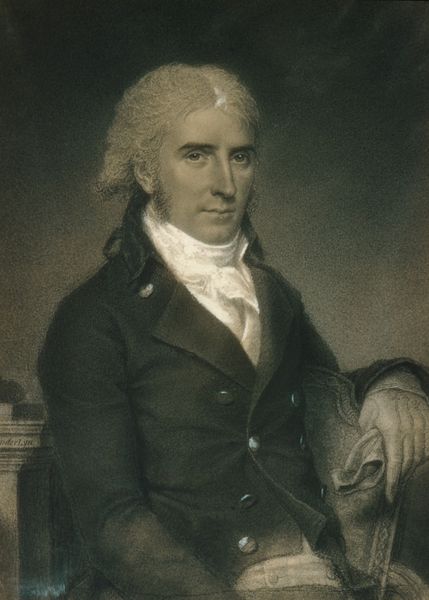
painting, oil-paint
#
portrait
#
figurative
#
portrait
#
painting
#
oil-paint
#
figuration
#
romanticism
Copyright: Public Domain: Artvee
Editor: We're looking at "Portrait of Mr. Dwight" by Thomas Sully, created in 1807 using oil paint. It has a really formal, almost austere feeling to it. What cultural values are embedded within this piece? Curator: It's a fascinating depiction. Think about what a portrait signified in 1807. Beyond simple likeness, these portraits served to project status and virtue. The restrained palette, the direct gaze… it speaks of republican ideals, a move away from the extravagance of European aristocracy. Can you sense that in his attire? Editor: Yes, he is not wearing jewelry, finery, or anything flamboyant. It's quite muted, understated. It's all very... controlled. Curator: Precisely. Sully also subtly signals the sitter's profession or interests. See the faint suggestion of a book? Perhaps he's being presented as an intellectual, a man of reason. Do you notice how that slight asymmetry actually enhances that impression? Editor: Now that you mention it, yes. It lends him a sort of quiet strength. But is it possible we're over-interpreting simple aesthetic choices? Curator: It’s a delicate balance. Artists often tap into pre-existing cultural codes. Sully would have been keenly aware of conveying dignity and gravitas. His style embodies a moment in the young American Republic as it shaped its identity. What will this mean to viewers now, generations removed? Editor: That's the million-dollar question, isn't it? Each generation brings their own lens. But by recognizing those initial intentions, it helps us to understand how imagery functions across time. Curator: Exactly. Every portrait holds within it a conversation across centuries about cultural ideals, aspirations, and memories of identity and place.
Comments
No comments
Be the first to comment and join the conversation on the ultimate creative platform.
